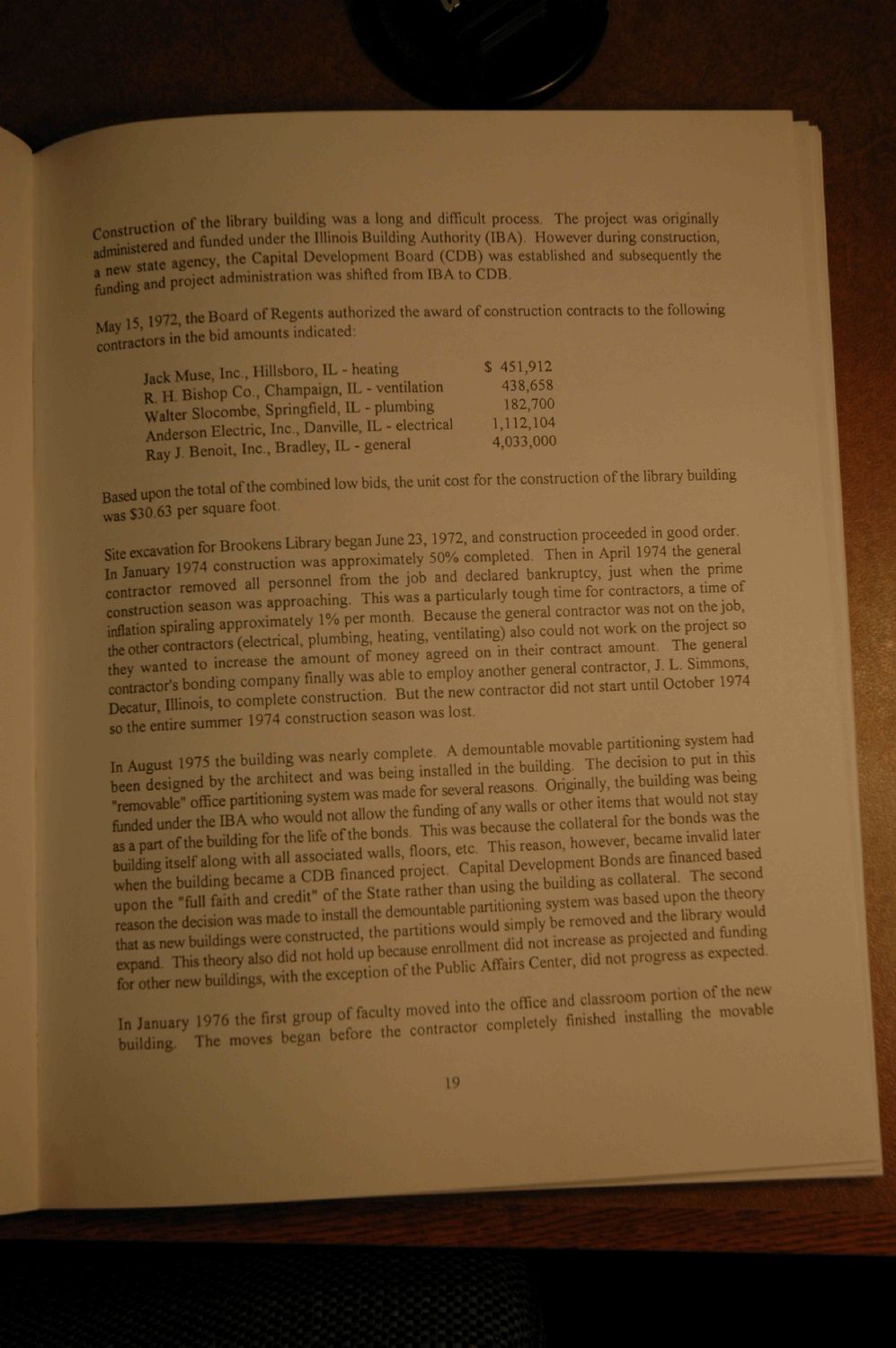| |
| |
Caption: UIS History 1969-1995 (Sangamon State Univ)
This is a reduced-resolution page image for fast online browsing.

EXTRACTED TEXT FROM PAGE:
Construction of the library building was a long and difficult process Th*> S i l t administered and funded under the Illinois Building A u t h o r i t y ^ e s t ^ a new state agency, the Capital Development Board (CDB) was funding and project administration was shifted from IBA to CDB. suosequentty the May 15.1972, theBoard oFRegents authorized the award of construction contracts to the following contractors in the bid amounts indicated: uwowing Jack Muse, Inc., Hillsboro, IL - heating R. H. Bishop Co., Champaign, IL - ventilation Walter Slocombe, Springfield, IL - plumbing Anderson Electric. Inc., Danville, IL - electrical Ray J. Benoit, Inc., Bradley, IL - general $ 451 912 438,658 182,700 1,112,104 4,033,000 Based upon the total of the combined low bids, the unit cost for the construction of the library building was $30.63 per square foot. Site excavation for Brookens Library began June 23,1972, and construction proceeded in good order. In January 1974 construction was approximately 50% completed. Then in April 1974 the general contractor removed all personnel from the job and declared bankruptcy, just when the prime construction season was approaching. This was a particularly tough time for contractors, atimeof inflation spiraling approximately 1% per month. Because the general contractor was not on the job, the other contractors (electrical, plumbing, heating, ventilating) also could not work on the project so they wanted to increase the amount of money agreed on in their contract amount. The general contractor's bonding company finally was able to employ another general contractor, J. L. Simmons, Decatur, Illinois, to complete construction. But the new contractor did not start until October 1974 so the entire summer 1974 construction season was lost. In August 1975 the building was nearly complete. A demountable movable partitioning system had been designed by the architect and was being installed in the building. The decision to put in this "removable" office partitioning system was made for several reasons. Originally, the building was being funded under the IBA who would not allow the funding of any walls or other items that would not stay as a part of the building for the life of the bonds. This was because the collateral for the bonds was the building itself along with all associated walls, floors, etc. This reason, however, became invalid later when the building became a CDB financed project. Capital Development Bonds arefinancedbased upon the "full faith and credit" of the State rather than using the building as collateral. The second reason the decision was made to install the demountable partitioning system was based upon the theory that as new buildings were constructed, the partitions would simply be removed and the library would expand. This theory also did not hold up because enrollment did not increase as projected and fowling for other new buildings, with the exception of the Public Affairs Center, did not progress as expected In January 1976 the first group of faculty moved into the office and classroom portion of the ne\ building. The moves began before the contractor completely finished installing the movabl 19
| |